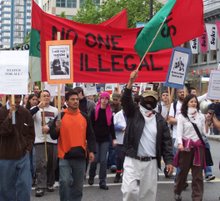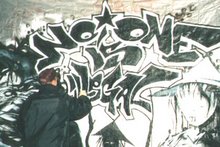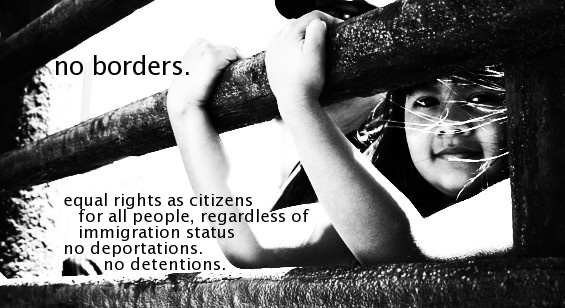CANADA: UN Body Holds Canada Responsible for Corporations’ Actions Abroad by Mark Cherrington, Cultural Survival April 10th, 2007
In a groundbreaking decision, the United Nations Committee on the Elimination of Racial Discrimination (CERD) has told Canada that it must rein in Canadian corporations operating on Indian land in the United States.The finding, issued in early March, was in response to a petition filed by the Western Shoshone Defense Project about the actions of Canadian resource-extraction companies operating on the tribe’s land in the western United States. Among other things, the Convention on the Elimination of Racial Discrimination, which has been ratified by both Canada and the United States, requires states to "guarantee the right of everyone ... in the enjoyment of ... economic, social, and cultural rights ... and the right to public health." The Shoshone petition claimed that these are the areas in which the Canadian companies are affecting them.
The petition especially targets Barrick Gold Corporation, the largest gold mining company in the world. Gold mining uses large amounts of toxic mercury and creates cyanide-laced leaching ponds, both of which threaten Shoshones’ right to health. The blasting used to open mining sites destroys sacred areas, which violates the tribe’s cultural rights to culture, and mining roads disrupt wildlife, undermining their traditional ways of finding food. Gold mining also requires vast amounts of water, which dries up springs and other water sources that the Shoshone need for health. The Betze mine alone uses 70,000 gallons per minute, and it is hardly alone. Western Shoshone lands are the third-largest gold producing region in the world, and there are six other Canadian gold companies besides Barrick operating there, with more applications for leases already under consideration.The Shoshone have targeted Canada in part because the United States has failed to take any action to protect Shoshone lands.
(Click here to read more)
skip to main |
skip to sidebar







Vancouver - Occupied Coast Salish Territories noii-van@resist.ca / 604-682-3269 ext.7149 www.nooneisillegal.org

Blog Archive
-
▼
2007
(422)
-
▼
April
(74)
- NOII-Van Shuts Down Immigration Offices- Report
- NOII-Van Shuts Down Immigration Offices- Photos
- NOII-Van Occupies Immigration Offices
- I am not asking for your approval
- Military Recruiters Forced to Withdraw from UCSC J...
- U.S. criticized for building wall around Sunnis
- Racism, Wealth and IQ: The Heart of Whiteness
- Immigrants Used to Justify a Homeland Security Pol...
- Desperation in Gitmo's Camp 6
- Asian Americans and the Virginia Tech Shootings
- African migrants attack Spanish patrol boat
- China's part-time McWorkers exploited
- Pakistan to expel Afghan refugees
- GOP Game "Catch an Illegal Immigrant" at Universit...
- NY: Wobblies Organize Brooklyn Warehouses
- "ENDGAME": Inhumane raid was just one of many
- Sexual cleansing
- Duke rape case; Blaming the victim, again
- Life in Solitary Confinement: 12,775 Days Alone
- The US has Returned Fundamentalism to Afghanistan
- What the persecution of Azmi Bishara means for Pal...
- Canada’s Conservative government moves to extend A...
- South Asian Corporate Dominance in Uganada leads t...
- Canadian army not welcome in Fort Simpson
- UN Body Holds Canada Responsible for Corporations’...
- Made in Canada Violence: Mining in Mexico
- Farm Labor Organizer Murdered in Mexico
- Australia: Call for HIV ban for migrants
- Amsterdam Anti-Detention Action
- STRIVE ACT is Corporate Designed Immigration Reform
- Anti-Minutemen Protestors face Columbia University...
- Iraqi Refugees Speak of Escape from Hell
- Militarizing The Border
- No One is Illegal Poster
- Women Against War and Neoliberalism Converge in Ca...
- Feminists debate logic of "humanitarian" warwar
- US accused of using neutron bombs
- Guantanamo hunger strike expands
- AFL-CIO Again Rejects Guest Worker Programs
- Suzi Hazahza and the Pirates of Homeland Security
- From Socialism to Barbarism in West Bengal
- Iraqi Refugees in Lebanon
- On Capitalism by Chomsky
- Palestine Land Day Statement
- SCC refuses to hear anti-terror appeal
- 15,000 protest in LA for migrant rights
- Pentagon orders 14,000 National Guard troops to Iraq
- Real Political Purpose of the ICE Raids
- 800+ arrests of Chilean high school students
- Navajo Challenge New Coal-Fired Plant
- No Olympics on stolen Native land
- Black Farmers Call for Boycott of Monsanto Products
- Profile of an Orientalist: Bernard Lewis at 90
- UN predicts huge migration to rich countries
- How easy it is to put hatred on a map
- Blackwater to open mercenary training facility nea...
- Listing Hezbollah as “Terrorist” Serves North Amer...
- In Oaxaca, Women Rise
- Iraq Refugee Crisis Engulfs Women Silenced by Rape
- CSIS questioning of Canadian Muslims threatens the...
- First Nations Recruiting by the Canadian Forces
- Gitmo Gulag: AI says "cruel and inhumane" conditio...
- Guantánamo prisoner charges confession extracted t...
- The Racist War on Immigrants
- Refugee fee called 'a mean barrier'
- Criminalizing Solidarity: Sami Al-Arian and the Wa...
- US Increases Deportation of Guatemalans
- U.S. Challenged on Immigrant Women's Legal Limbo
- Secwepemc Defenders Win Right to Appeal Conviction...
- Indigenous people denounce Venezuelan government
- Top 10 Immigration Myths
- Forces' terror manual lists natives with Hezbollah
- Poll: 50% of Israeli Jews support state-backed Ara...
- French Teachers Strike in Support of Immigrants
-
▼
April
(74)
Labels
- Afghanistan (21)
- Africa (25)
- Anti-Oppression (15)
- Australia (8)
- Canada (105)
- Corporate Globalization (45)
- East Asia (9)
- Environment and Health (26)
- Europe (25)
- Gender (42)
- GLBTQ (7)
- Haiti (9)
- Immigrant/Refugee/Nonstatus (154)
- Imperialism (51)
- Incarceration (63)
- Indigenous (57)
- Iraq (54)
- Labour (34)
- Latin America (41)
- Media (3)
- Middle East (28)
- Palestine (42)
- Police Brutality (4)
- Poverty (17)
- Racism (58)
- Security (67)
- Somalia (7)
- South Asia (25)
- SPP (2)
- US Abroad (91)
- US Home (160)

About Us
No One is Illegal-Vancouver is a grassroots anti-colonial immigrant/refugee rights community collective with leadership from members of migrant and/or racialized backgrounds.
As a movement for self-determination that challenges the ideology of immigration controls, we are in full confrontation with Canadian border policies; denouncing and taking action to combat racial profiling, detention and deportation, the national security apparatus, law enforcement brutality, and exploitative working conditions of migrants. We stand in solidarity with indigenous struggles against colonization across Turtle Island and also place ourselves within the broader movement for global justice struggling against capitalism, homophobia, occupation, patriarchy, poverty, war, and other systems of oppression and exploitation.





No One Is Illegal - Vancouver
Our educational work involves furthering an anti-imperialist, anti-war, and anticapitalist analysis that links the "War on Terror" abroad to the racist "Fortress North America" at home. We struggle for the right for our communities to maintain their livelihoods and resist war, occupation, and displacement, while building alliances and supporting indigenous sisters and brothers fighting theft of land and displacement.
Our work is carried out through various strategies including public awareness events, direct support work with refugees and undocumented migrants, multilingual community political/legal forums, fighting back through rallies and direct actions, and ongoing campaigns and projects.